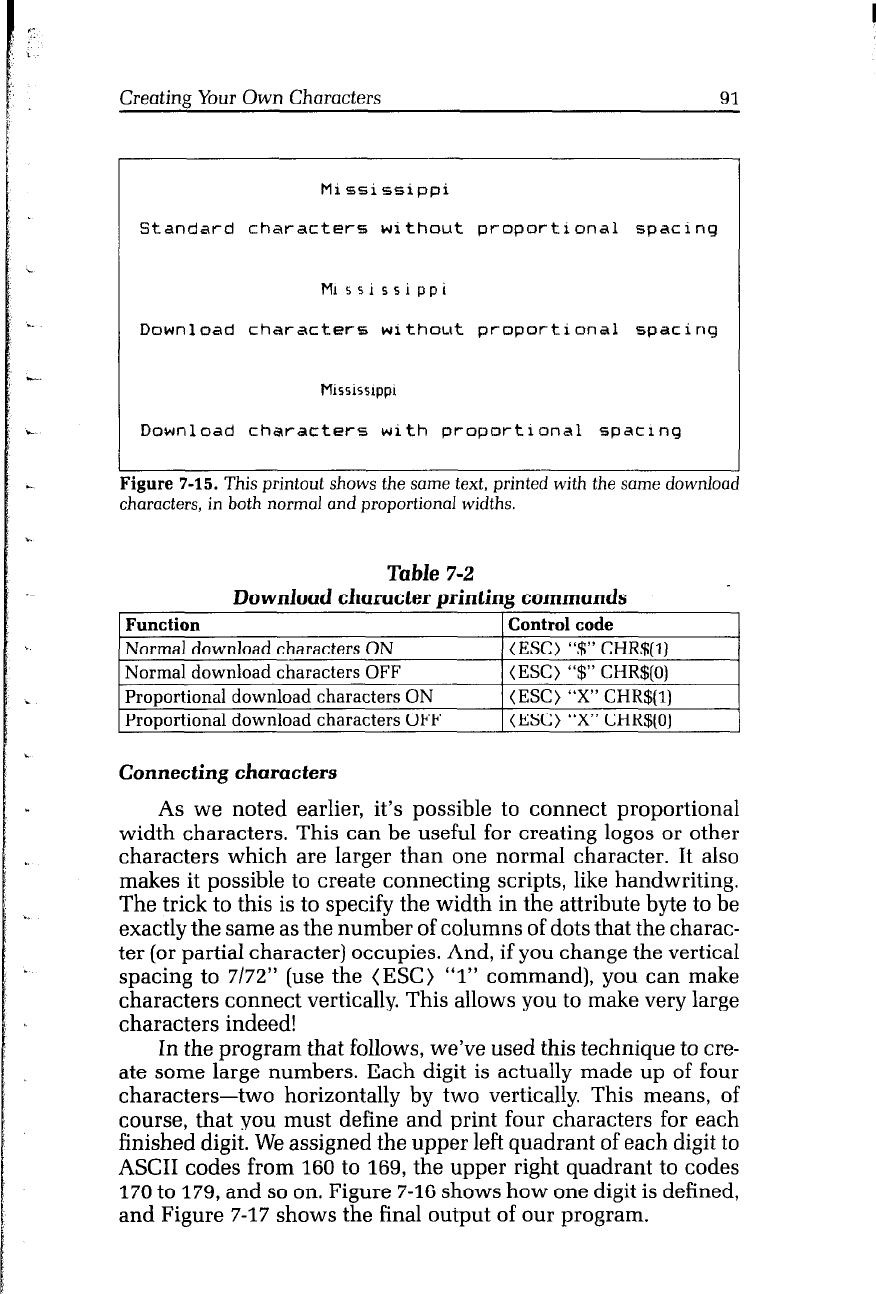
Creating Your Own Characters
91
Hi ssi ssippi
Standard characters without proportional spacing
Mississippi
Download characters without proportional spacing
Download characters with proportional spacing
Figure 7-15. This printout shows the same text, printed with the same download
characters, in both normal and proportional widths.
Table 7-2
Download character printing commands
Function
Control code
Normal download characters ON (ESC) “$” CHR$(l)
Normal download characters OFF (ESC) ‘I$” CHR$(o)
Proportional download characters ON
(ESC) “X” CHR$(l)
Proportional download characters OFF (ESC) “X” CHR$(o)
Connecting characters
As we noted earlier, it’s possible to connect proportional
width characters. This can be useful for creating logos or other
characters which are larger than one normal character. It also
makes it possible to create connecting scripts, like handwriting.
The trick to this is to specify the width in the attribute byte to be
exactly the same as the number of columns of dots that the charac-
ter (or partial character) occupies. And, if you change the vertical
spacing to 7/72" (use the (ESC) “1” command), you can make
characters connect vertically. This allows you to make very large
characters indeed!
In the program that follows, we’ve used this technique to cre-
ate some large numbers. Each digit is actually made up of four
characters-two horizontally by two vertically. This means, of
course, that you must define and print four characters for each
finished digit. We assigned the upper left quadrant of each digit to
ASCII codes from 160 to 169, the upper right quadrant to codes
170 to 179, and so on. Figure 7-16 shows how one digit is defined,
and Figure 7-17 shows the final output of our program.


















